Wild lettuce or virous lettuce, is a wild plant that grows in France, the Mediterranean basin, southern Europe and North America. Often considered a "weed" by gardeners, it nevertheless holds some secrets and many properties.Lactuca virosa is one of those ancestral plants, despite the fact that it is little known nowadays and can have many uses and modes of consumption.
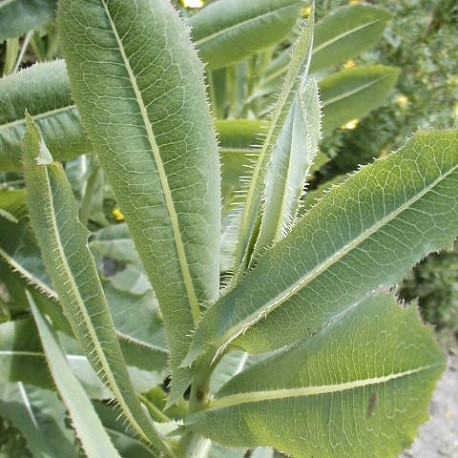
Description of virous lettuce
Lactuca virosa, also known as lettuce opium, is a species of the lettuce family that grows easily, hence its reputation as a "weed". It is present mainly in nitrogen-rich soils, so often near illegal dumps, or on roadsides, in gardens, in dilapidated places or even at home…
Leafy lettuce can also be part of the plants that grow in the city, but it is not recommended to consume it because of the ambient pollution.
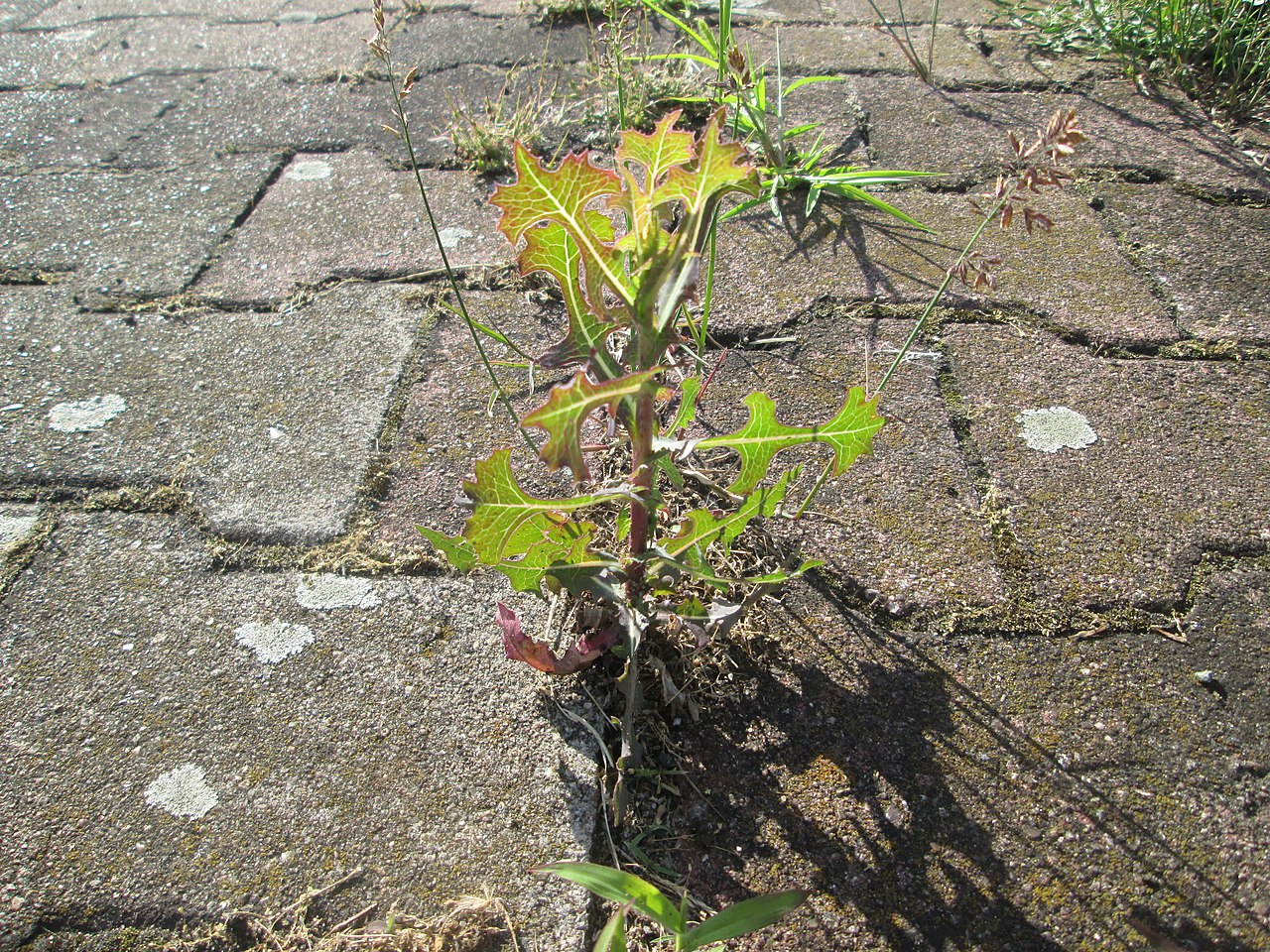
Lactuca virosa is a biennial seeded plant. They grow from February to September: they develop suddenly when temperatures are warmer and flowering is from mid-August.
Some seeds germinate before winter and form a rosette to spend the season as well. Thereafter, the rest of the seeds wait until spring to develop.
Recognizing a virous lettuce from a scariole lettuce: description
Virous lettuce measures between 15 to 100cm and can even go up to 2m. It has rather elongated leaves. In bloom, yellow flowers, small compared to the structure of the plant, appear, which may resemble dandelion flowers, with the difference that wild lettuce has small pimples.
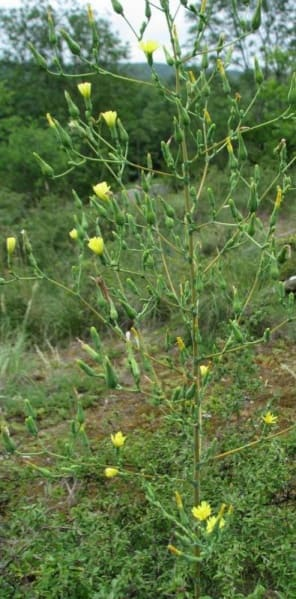
Its stem is rather strong, purple at its base, and is covered with soft spines that do not sting. When it breaks, it is then that comes out a white juice, initially used to make latex, but which can especially have other properties.
Be careful, however: being part of the same family – lettuce – it can be confused with another type of plant: scariole lettuce, which is not exactly the same. Both species are called "wild lettuce" but the leaves of the virous lettuce will be larger, slightly whiter. The leaves of this species will have less straight hairs.
In the photo, we can see the rosette of large toothed leaves of the virous lettuce on the right.
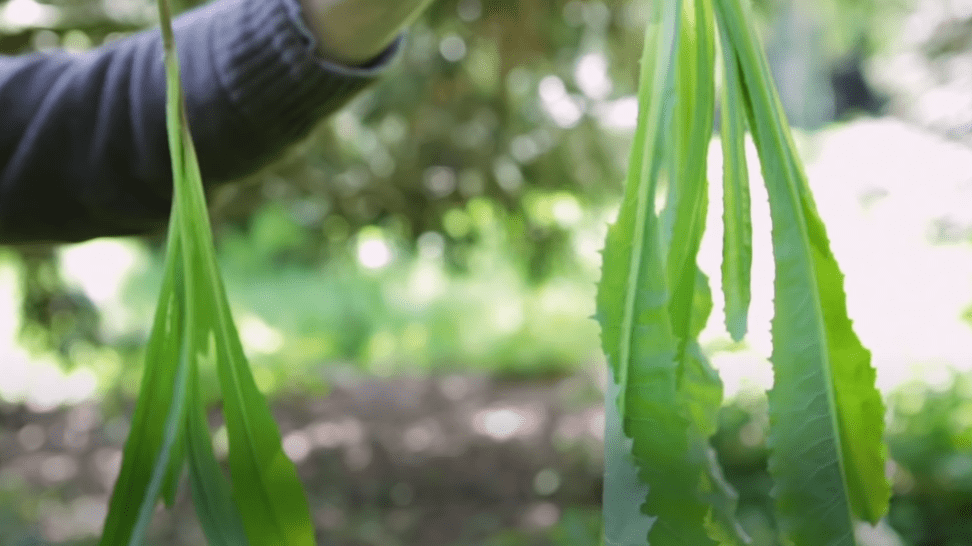
The effects of wild lettuce
Desired effects
Wild lettuce grows easily, which is why it is very convenient because it contains latex in its stem. Nevertheless, this substance also has psychotropic and narcotic effects.
Consumers report these effects: calming combined with a sedative, slightly psychotropic euphoria, with the impression of being on a cloud. Its effects would be due to adenosine agonist effects, the opposite effect of caffeine, which would explain its soothing effect.
It is often called "legal marijuana" but its effects are closer to those of opium, salvia or kratom.
The dose
The therapeutic dose of virous lettuce used to make remedies is usually between 0.5 and 3 grams of dry plant, in infusion or decoction. From 4 grams, virous lettuce becomes sedative and drowsiness may appear. From 6 to 8 grams, it is considered a high dose: the effects are close to narcotic and hypnotic products. For some, it is at this dosage that increased agitation is observed as well as more present side effects.
Side effects
The effects of virous lettuce are rather mild, so there are few side effects. Nevertheless, it is possible to have them: several consumers sometimes report headaches following the intake or during the descent. These side effects would be more common if lettuce is smoked than if it is consumed otherwise.
A good way to avoid this is to consume it as an infusion and hydrate well.
Consumption of wild lettuce
When to consume it?
It is advisable to harvest the virous lettuce and its juice/latex at the end of July because this is when it is most concentrated.
How to consume it?
It is possible to prepare and consume virous lettuce in several forms, requiring more or less preparation time and having different effects and time of action.
Lettuce opium or lactucarium
The known form of this lettuce is lettuce opium or lactucarium. It may look like hashish at first. The amount of vary-leaved lettuce picked will depend on a desired dosage. To make it, you have to pick the leaves of the lactuca virosa and put them in a container to immerse them in water. Once this is done, crush the leaves of the varyy lettuce to get the sap out and then it must be dried in the sun so that the water evaporates. With what will be left, you can make a small ball, brown in color.
You can also make lactucarium by crushing the leaves of the plant with a pestle and mix them with a little saliva and lemon juice. Once the mixture is well crushed and the latex extracted, add water to immerse the leaves and continue mixing and then heat everything over low heat in a thick saucepan, until reduction, to obtain the brown paste.
You can consume lactucarium by eating or smoking it, in joints or in a pipe, but the effects will be more powerful if it is infused. Be careful, the dough is very sticky and is not easy to handle.

Smoke
You can smoke lettuce opium, thanks to the recipes indicated above or you can consume only latex. Cut the stem and extract the white juice: let it dry and, once dry, make small balls that you can put in a joint. In this form, the effects of virous lettuce will generally be closer to cannabis, hence its use in some users when they lack marijuana.
Some are content to pick its leaves and leave the plant dried in the sun and then consume them with tobacco, but the effects are much lighter.
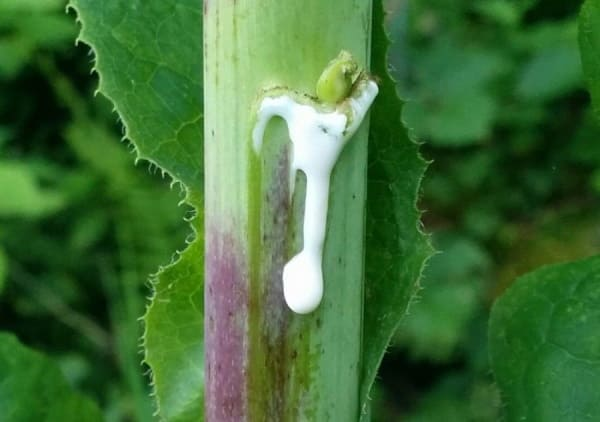
Infusion
This is the easiest, most accessible and recommended method. It is popular with regular users. To make this herbal tea, you have to take the leaves of the plant and let them infuse in hot water. This mode of consumption would avoid headaches but it is bitter. So you can brew it with your favorite tea or herbal tea Consumers generally recommend mint or linden, with honey: this combination hides the taste, and aromatic plants can be picked at the same time as lettuce, if it is the right season.
The main advantage, in all these modes of consumption, is that the virous lettuce is easily accessible and legal.
History of lactuca virosa
The properties of lactuca virosa were already known in ancient times. Among the Romans and Hebrews, it was referenced: it was used, dried or not, as a remedy for stomach problems, while in Europe and Egypt, it was known for its aphrodisiac effects.
Later, during the Middle Ages, it was known as one of the plants most used by witches, for its psychotropic and hypnotic powers, being associated with black magic. It is said to have been used as the main ingredient in witch ointments, balms that would have made them fly, the flight here metaphorically referring to the hallucinogenic experience.

In the nineteenth century, wild lettuce was used as a remedy to help wean opium, being quite close to its effects while having a much reduced toxicity. At that time, the extract of virous lettuce was then called "lactucarium". However, this did not seem to be enough for some addicted people, as the effects and shape of these plants were much less powerful.
Subsequently, the plant fell into oblivion: lactuca virosa or lactucarium are no longer used in traditional medicines and are mainly found in herbal medicine pharmacies or specialized sites.
Other qualities of virous lettuce
Lactucerol and lactucin, the two active ingredients extracted from virous lettuce, give this plant many benefits. From small to medium doses, it can help calm down and fall asleep, moreover some consumers report using it mainly in this case.
With its sedative and analgesic effects, virous lettuce can also be taken to combat pain.
It also has excellent nutritional qualities, with vitamins, including vitamin C, fiber and trace elements.
This plant would help digestion, in the demoulding of stool, where opium can, conversely, create problems. In addition, lactuca virosa has been combined with opium to reduce side effects while increasing effects. Virous lettuce, however, has the advantage of being less addictive and causing fewer side effects.
Nevertheless, lactuca virosa is rarely used in cooking, as it is very bitter. It is sometimes added to mesclun, a cold mixture of plants and leaves cooked in southern France.

Virosese lettuce, called legal marijuana or lactuca virosa, is a biennial plant that can easily be found in Europe and North America. It can be consumed in several forms and has multiple assets but consumers prefer it mainly for its high, even hypnotic, with no or few side effects. Although little known despite its legal and accessible status, this plant is just waiting to become popular!
